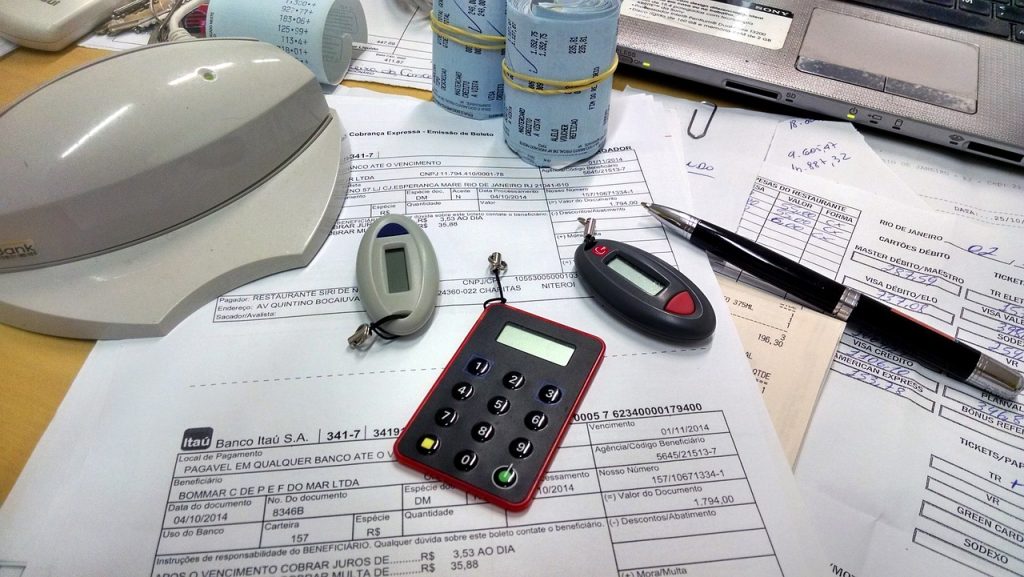
What Is A Merchant Cash Advance?
If you are a small-medium business owner and find yourself struggling through the business month, or perhaps just want to grow your business, a merchant cash advance could work as your shortcut to funding. This specific type of funding has minimal paperwork and application requirements making them easily accessible to the vast majority of business owners. Better yet, there’s no possibility of late charges – keep reading to find out more and whether or not merchant cash advance loans are the right type of funding for your business…
How does merchant cash advance work?
Here we’ll detail what is merchant cash advance as well as how does merchant cash advance work…

Originally, merchant cash advances were designed to be a lump-sum payment that was to be exchanged for a certain agreed-upon percentage of future credit/debit card sales. Nowadays, it’s associated with an array of small business financing options with short and regular payment terms as opposed to larger and longer payment terms linked to traditional bank loans.
Most people think of a merchant cash advance as a loan, but merchant cash advance loans don’t exist as they aren’t a loan, to begin with. It’s more of an advance (it’s in the name!) or sale, on a business’ credit card receipts, based on the future revenues or credit card sales. The cash in hand lump sum of funds provided is exchanged for a portion of the businesses daily future credit and debit card sales.
The Merchant Cash Advance Process:
- Agree upon terms – an agreement needs to first be made between the business and the provider regarding the terms (advance and payback amount as well as the holdback percentage – a fixed percentage the provider will take from your daily or weekly sales)
- Transfer – the advance is transferred to the business’ bank account
- “Holdback” – the agreed upon percentage of the daily credit card receipts or revenue is withheld to pay back the merchant cash advance provider
- Completion – holdbacks will come to an end as soon as the daily withdrawals (advances) to the provider have been paid in full
Merchant cash advance providers work with a partner credit card processor to ensure the daily holdback percentage is subtracted from the business and deposited into the provider’s account. You won’t ever have to worry about falling behind on your payments as is possible with other types of loans, as the amount will automatically come out of your account on a daily (or weekly) basis and be in proportion to your earnings for that day.
Merchant cash advance regulations – do they even exist?
One of the grey areas of merchant cash advances is highlighted in their regulations – or lack of, should we say. If you’re wondering why there are no merchant cash advance regulations it’s because it isn’t actually a loan but rather a sale. If you think back to the definition of what a merchant cash advance actually is, you’ll remember that the advance company or provider purchases your future credit card sales. It is this loophole that allows for them to be entirely regulation free.
Being labeled as a sale or commercial transaction rather than a loan means being regulated by the Uniform Commercial Code unique to each state, rather than the banking laws like the Truth in Lending Act. Unlike other loans that are bound to usury laws (that protect consumers by governing the amount of interest charged on a loan and setting caps where needed), a merchant cash advance can simply fly-by these laws. So long as a merchant cash advance is referred to as a “sale” (and not a loan), these state usury laws will not apply to them – giving way to a largely unregulated market. It is this unregulated market that allows for providers to charge interest rates more or less, as they please.
How much does a merchant cash advance cost?
An average cash advance floats in the realms of $10,000-$1M – that’s big bucks you gain access to if your business is in need, however, you must keep in mind that due to the lack of regulations, interest rates will be higher than regular loans. You can expect to pay back an average of 20-40% of the amount that you borrow. When you see these numbers you can expect to see them as a factor rate, so 20% would be 1.20 and 40% would be 1.40 for example.
Working Example:
For every dollar that advances a business that has to be paid back $1.20 over the advance period. If your business receives a lump sum payment of $10,000 with a 1.20 factor rate, your business will have to pay the provider a sum total of $12,000:
($10,000) x (1.2) = $12,000
As a business owner considering a merchant cash advance, you’ll need to know the difference between the holdback and repayment rates – which are two separate things.
1. Holdback:
This is the amount a business pays back every day (the percentage you agreed upon), with typical rates being in the realms of 8-30%.
Holdback rates are based on:
- The number of funds a business receives
- The time it will take to repay the advance
- The scale of the monthly receivable
2. Repayment:
This is the repayment amount for the whole advance.
These two numbers will differ, for example, your holdback rate could be 10% with a repayment of 25% – be sure to know the difference between the two.
The average payback time of a merchant cash advance is kind of unknown, as it will only be complete when the factor rate has been paid back in full, which will, of course, depends on the income of the business. The typical time taken, however, is 3-18 months.
Pros and Cons of a merchant cash advance
Like anything in life, there are pros and cons. We won’t beat around the bush when it comes to deciding on something as important as funding for your company, you need to be sure that you are making an informed decision.
Without further ado, this is what you need to consider…
Pros:
- No fixed monthly payments, no payoff date and no interest rate (unlike bank loans).
- No collateral – giving access to a business owner’s merchant account totally eliminates the need for collateral. If the merchant’s business were to fail and the full advance had not been paid off, the owner’s assets would not be at risk. There is actually no legal liability if the cash advance is not fully repaid.
- No chance of a late payment – the payment is automatic and goes via a partner credit card processor taken from the merchant’s credit card transactions. This means no late charges to worry about.
- Very quick access to funding with little paperwork – in fact, via Become a merchant cash advance can be received within 3 hours.
- No need for amazing credit – this funding solution is far easier to qualify for than traditional funding. If you cannot qualify for alternative means of funding, or have a lower credit score, a merchant cash advance could be a good option.
- Payback is relative to income – because the repayments are based on a percentage of the daily balance in the merchant account, the more transactions, the faster the advance will be paid off. It also works vice versa, should cash-flow be on the slow side, the draws from the merchant account will also be less. It works to lessen the burden on your business leading you to be able to grow over the length of the payback.
Of course, it’s not all rainbows and sunshine, there’s always a catch:
Cons:
- More costly than traditional financing – this is perhaps the biggest catch of them all (and it’s due to the lack of regulations that we discussed above).
- Short-term solution – the short time-frame of merchant cash advances (3-18 months) is another reason why they are more on the expensive side of things. Only use this funding solution if it solves your short-term financial issue.
- Lack of regulation – a merchant cash advance is a financial contract, not a loan. Be sure to do your due diligence and research your lender before signing anything. The lack of regulation means that there are ethical lenders, but also shady ones out there.
- There may be limitations to your business operations (only during repayment period) – each and every merchant cash advance comes with a variety of T’s & C’s. The provider could prohibit you from taking steps to encourage cash payments for example. Another term worth noting that sometimes crops up is to prohibit business owners from switching credit card processing companies while money is owed. Providers are covering their backs, they want to protect credit card revenue streams, seeing as the advance amount is based on credit card volume. Be sure to carefully review these terms before accepting a deal.
Who qualifies for a merchant cash advance?
When it comes to who can qualify, this ultimately depends on the lender that you go with. If applying for a merchant cash advance via Become (giving access to a pool of lenders) the following criteria are needed:
- Credit score of 550 (FICO) – a merchant cash advance with bad credit is possible because the lender will look more at the daily credit card receipts in order to determine if your business will be able to pay back the advance. The business health is, therefore, a more important factor than credit itself.
- Minimum 12 months in business
- 15k monthly revenue
Who is a merchant cash advance right for?
Merchant cash advances are a good idea for industries with a high number of transactions per month such as restaurants/bars, B2C companies like retail and salons etc. A merchant cash advance with bad credit is entirely possible so if you have a poor credit score and need access to funds, this could work for you. On top of that, if you cannot qualify for alternative funding, need access to fast and easy cash and most importantly, can forecast a relatively steady future cash flow from your customers – then a merchant cash advance could be right for your business.
How to apply for a merchant cash advance
Applying through a merchant cash advance via Become is easy. Become is an online marketplace for business loans and using its proprietary technology, it’ll match your business with the most relevant lenders and merchant cash advance providers to suit your needs (at no cost).
To apply for a merchant cash advance via Become:
- Click here to apply online: merchant cash advance
- Fill out your details (including your business’ credit card sales) and connect your online bank account (you can also use an accounting software such as Quickbooks)
P.S. there’s no hard credit check!
- If you qualify, you then will have to choose the offer and lender you’d like to go with
- Receive funds on the same day – as little as 3 hours is possible
If a merchant cash advance doesn’t sound like the right funding solution for your business’s needs, be sure to check out our complete guide to business lending to discover alternative business funding solutions.




